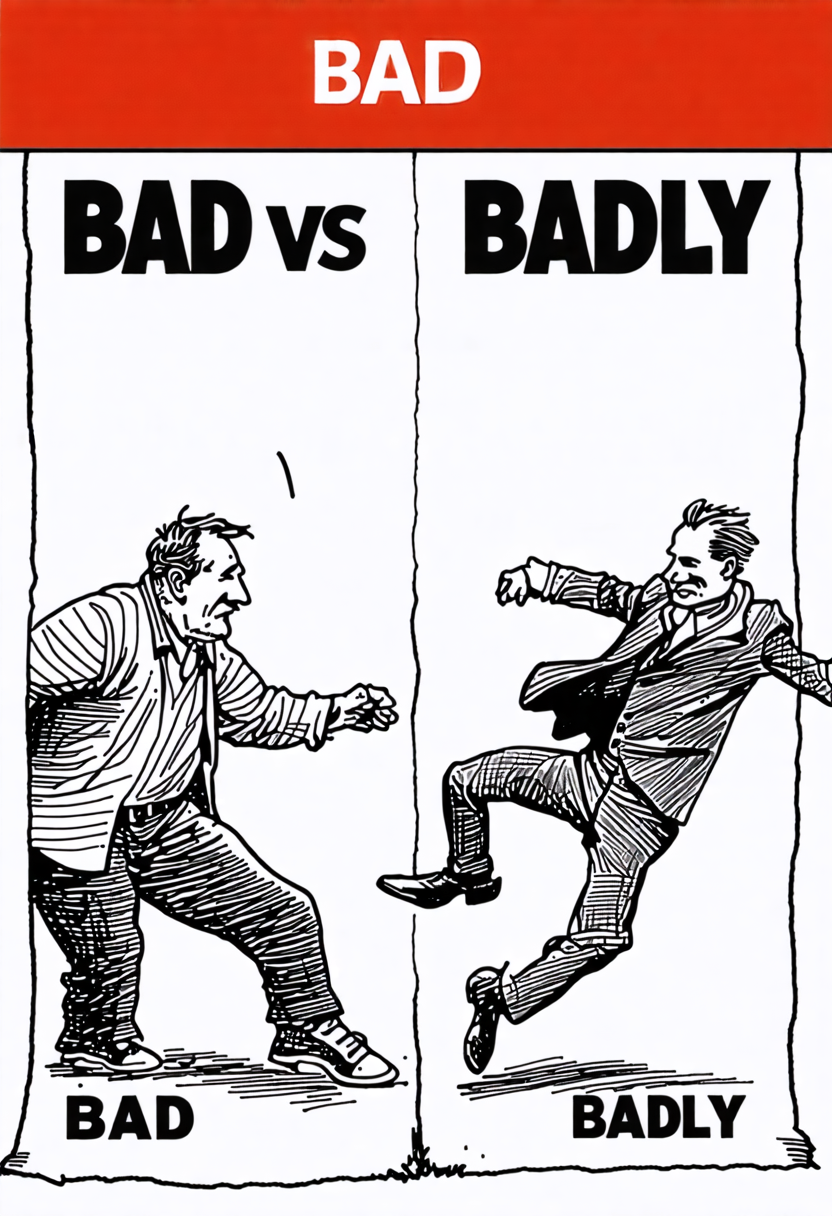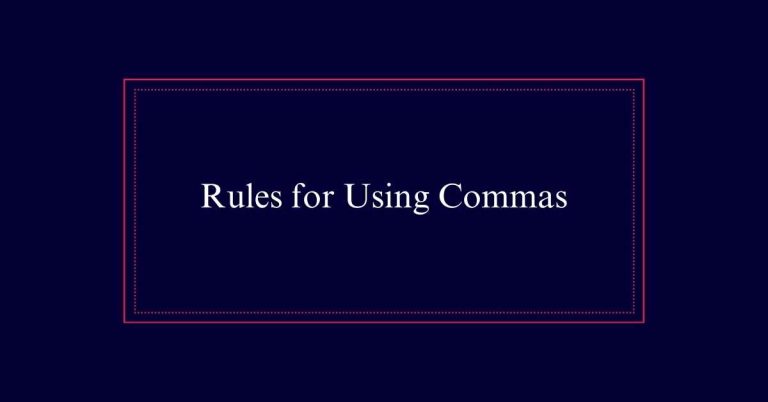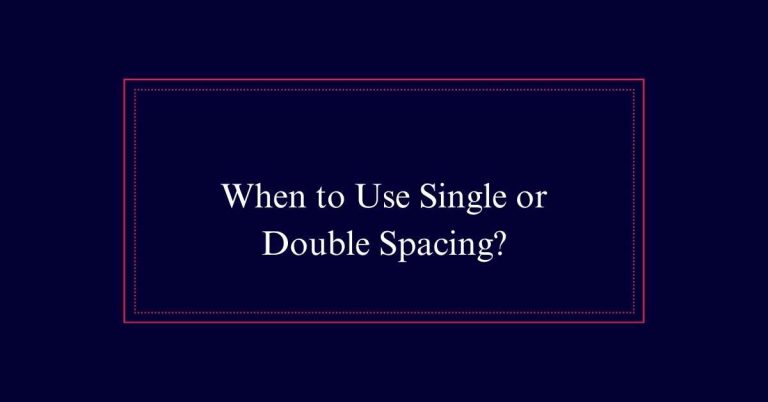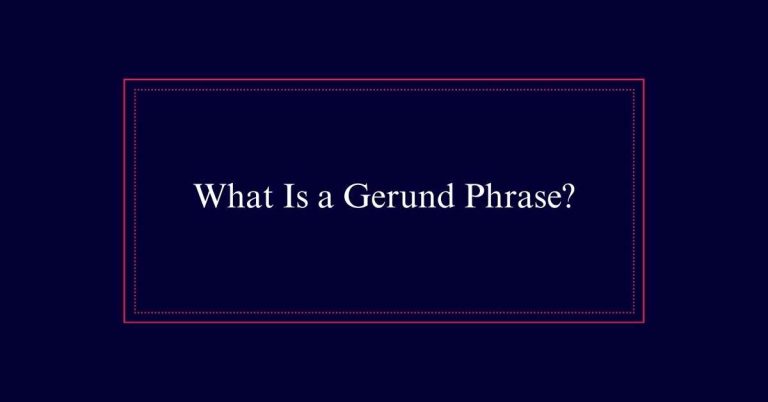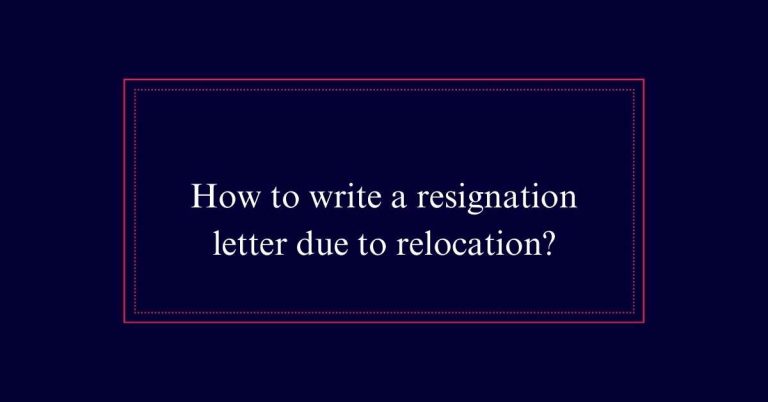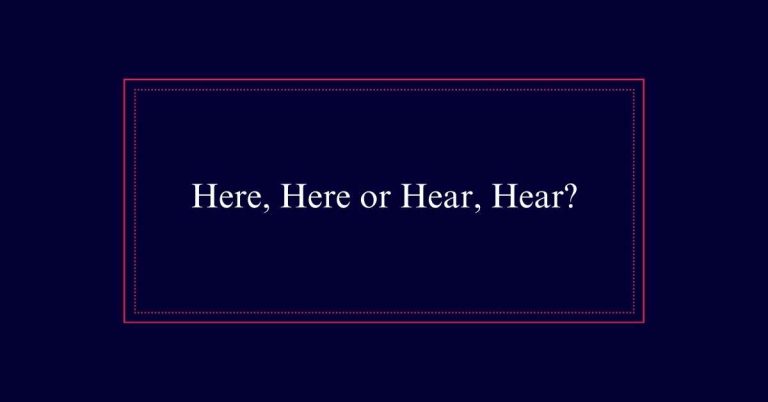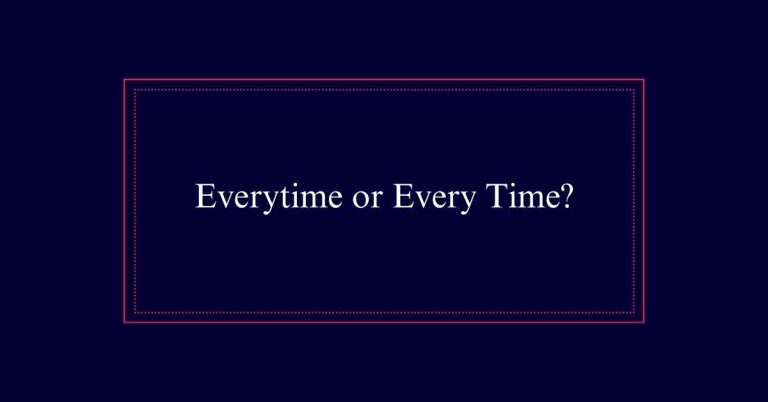Bad vs. Badly
The difference between ‘bad’ and ‘badly’ lies in their grammatical roles. ‘Bad’ is an adjective used to describe nouns, indicating the poor quality or condition of a person or thing, such as in ‘a bad book’ or ‘a bad decision.’ ‘Badly,’ on the other hand, is an adverb. It modifies verbs to explain how an action is performed, like in ‘She sang badly’ or ‘He writes badly.’ Accurate use of ‘bad’ and ‘badly’ guarantees clear communication.
Understanding Adjectives and Adverbs
Understanding the difference between adjectives and adverbs is essential for proper grammar.
Adjectives describe or modify nouns, giving more information about people, places, or things. For example, in the phrase “bad restaurant,” the adjective ‘bad’ modifies the noun ‘restaurant.’
Adverbs, on the other hand, modify verbs, adjectives, or other adverbs, often explaining how, when, where, or to what extent an action occurs. For instance, in the sentence “She did badly on the test,” the adverb ‘badly’ modifies the verb ‘did.’
Modifying Nouns With Bad
Using the adjective ‘bad’ to modify nouns is crucial for clear and effective communication. ‘Bad’ describes the quality of a noun, providing specific information.
For instance, when we say ‘a bad restaurant,’ we convey that the restaurant does not meet certain standards. Similarly, ‘a bad teacher’ implies that the teacher is not effective or skilled.
It is important to use ‘bad’ correctly to guarantee the listener or reader understands the intended meaning. Misusing ‘bad’ can lead to confusion or misinterpretation.
Modifying Verbs With Badly
When describing how an action is performed, the adverb ‘badly’ should be used to modify the verb. Adverbs like ‘badly’ provide information on how, when, where, or to what degree an action occurs.
For example, in the sentence ‘She sings badly,’ ‘badly’ modifies the verb ‘sings,’ indicating the quality of her singing. It is essential to use ‘badly’ with action verbs to convey that the action is done poorly.
Misusing ‘badly’ and ‘bad’ can lead to confusion. Remember, ‘badly’ is appropriate for verbs, while ‘bad’ should be reserved for nouns and linking verbs. This distinction helps maintain clarity and precision in communication.
Examples of Bad in Sentences
‘Bad’ serves as an adjective and is used to describe or modify nouns in sentences. It helps convey negative qualities or conditions of the noun it modifies. Here are some examples to illustrate its accurate usage:
- Describing People: ‘He is a bad teacher.’ This highlights that the teacher is not effective.
- Describing Objects: ‘This is a bad book.’ This suggests the book is not enjoyable or well-written.
- Describing Situations: ‘That was a bad decision.’ This indicates that the decision led to unfavorable outcomes.
- Describing States: ‘My dog is bad.’ This implies that the dog behaves poorly.
Examples of Badly in Sentences
‘Badly’ functions as an adverb and is used to modify verbs, indicating how an action is performed. For example, ‘She sang badly,’ means her singing was poor. Another example is, ‘He behaved badly at the party,’ which means his behavior was not good. In each case, ‘badly’ describes how the action is carried out.
Consider, ‘The engine runs badly,’ meaning the engine does not function well. Similarly, ‘He writes badly,’ means his writing is not up to standard. Using ‘badly’ correctly clarifies the quality of an action.
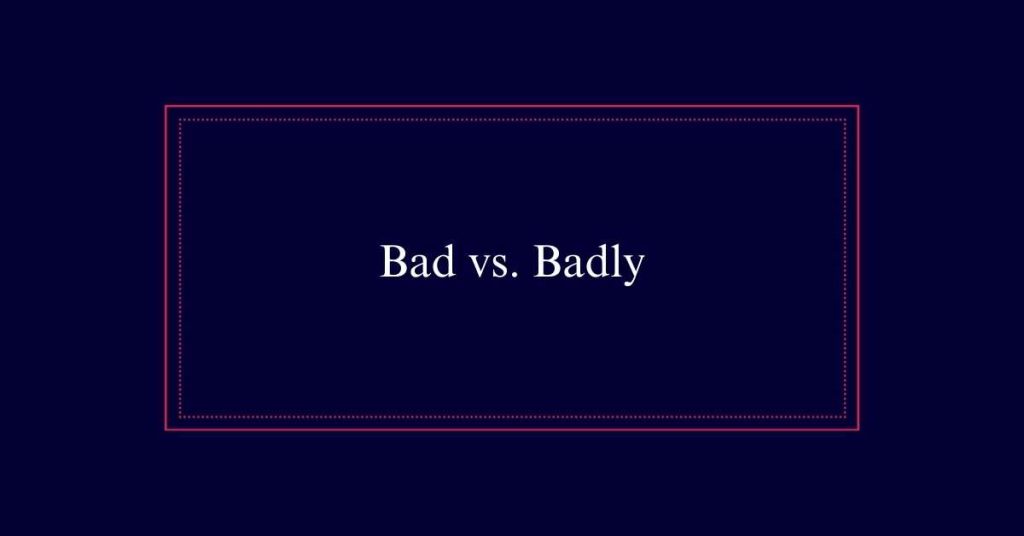
Linking Verbs and Adjectives
Linking verbs connect the subject of a sentence to a subject complement, often an adjective, that describes the subject. These verbs do not show action but rather link the subject to additional information.
Common linking verbs include:
- To be: ‘He is happy.’
- To seem: ‘She appears tired.’
- To look: ‘The cake appears delicious.
- To feel: ‘I sense cold.’
When using linking verbs, it is correct to use adjectives rather than adverbs. For example, ‘The soup tastes bad’ is correct because ‘tastes’ is a linking verb and ‘bad’ is an adjective. Understanding this distinction maintains clarity and accuracy in writing, avoiding common mistakes like ‘The soup tastes badly.’
State Verbs and Bad
State verbs describe conditions or situations that are static rather than dynamic. These verbs express states of being or perception, such as feel, seem, look, and smell.
When using these state verbs, the adjective ‘bad’ is appropriate. For instance, you might say, ‘The soup smells bad,’ or ‘He feels bad about the mistake.’
These verbs link the subject to an adjective that describes a state or condition, rather than indicating an action. As a result, ‘badly’ is inappropriate in these contexts.
Misuse often arises because people confuse these state verbs with action verbs. Remember, ‘bad’ aligns with the static nature of state verbs to promote clear and accurate communication.
Common Misuse Explained
In everyday conversation, the misuse of ‘bad’ and ‘badly’ often stems from a lack of understanding of their distinct grammatical roles. Misunderstanding these roles can lead to common errors. To clarify:
- Adjective vs. Adverb:
‘Bad’ is an adjective that modifies nouns, while ‘badly’ is an adverb that modifies verbs.
- Contextual Use:
Use ‘bad’ with nouns and ‘badly’ with action verbs.
- Linking Verbs:
With linking verbs like ‘feel’ or ‘seem,’ use ‘bad’ to describe emotional or physical states.
- Common Errors:
People often say ‘She did bad on the test’ instead of ‘She did badly on the test.’
Correct Usage Tips
To guarantee correct usage of ‘bad’ and ‘badly,’ remember that ‘bad’ modifies nouns while ‘badly’ modifies verbs. Use ‘bad’ when describing a noun, such as in “a bad experience” or “a bad teacher.” This guarantees clarity in identifying the nature or quality of the noun.
Conversely, employ ‘badly’ when describing how an action is performed. For instance, “She sings badly” or “He performed badly” clearly shows the manner of the action. Be mindful of linking verbs like ‘feel’ or ‘seem,’ which require ‘bad’ to describe states, as in “I feel bad.”
Clarity in Word Choice
Understanding the difference between ‘bad’ and ‘badly’ is essential for maintaining clarity in word choice. Proper usage can enhance the precision of your communication. Here are key points to guarantee clarity:
- Adjective vs. Adverb:
- ‘Bad’ is an adjective that modifies nouns.
Example: ‘That was a bad idea.’
- ‘Badly’ is an adverb that modifies verbs.
Example: ‘She performed badly.’
- Linking Verbs:
- Use ‘bad’ with linking verbs like ‘to be’ and ‘to feel’.
Example: ‘He feels bad.’
- State Verbs:
- ‘Bad’ also pairs with state verbs like ‘seem’ and ‘look’.
Example: ‘She looks bad.’
- Common Errors:
- Avoid using ‘bad’ when ‘badly’ is required and vice versa.
This prevents confusion.
Frequently Asked Questions
How Can Context Help Determine the Correct Usage of Bad and Badly?
Context helps determine the correct usage of “bad” and “badly” by identifying the role of the word in the sentence. “Bad” modifies nouns, while “badly” modifies verbs, ensuring clarity in communication.
Are There Any Mnemonic Devices to Remember the Difference Between Bad and Badly?
To remember the difference, think ‘Bad Noun, Badly Verb.’ ‘Bad’ describes a noun (like a bad idea). ‘Badly’ describes an action (like singing badly). This device helps guarantee correct usage in sentences.
Can Dialects or Regional Variations Affect the Use of Bad and Badly?
Yes, dialects and regional variations can affect the use of “bad” and “badly.” In casual speech, some regions may use “bad” where “badly” is grammatically correct, reflecting local linguistic norms and preferences.
How Do Bad and Badly Compare to Similar Adjective-Adverb Pairs?
Adjective-adverb pairs like “good” and “well” function similarly to “bad” and “badly.” “Good” modifies nouns, while “well” modifies verbs. Both sets follow the rule: adjectives describe nouns, adverbs describe verbs for clarity.
Are There Exceptions to Using Bad With Linking Verbs?
Yes, there are exceptions when using “bad” with linking verbs. For example, linking verbs like “feel,” “seem,” “look,” and “smell” should pair with “bad” to describe emotional or physical states, not “badly.”
